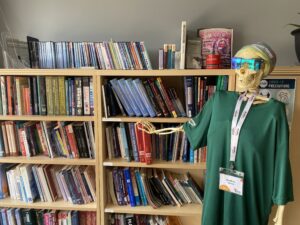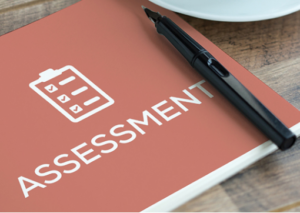Meaningful Con Ed that Doesn’t Break the Bank
Some of the things we often hear at the MTAM is how expensive and time-consuming professional development (PD) can be and how there's nothing good left to take after practicing for 20+ years.
Common Misconceptions
We think there are some misconceptions on what constitutes quality PD, what it costs, and where and how you can access it. This article will help get you up to date and dispel some of the myths around PD and make sure you’re getting PD credits for the work you’re already doing.
 No matter what stage of practice you are in there are goals you will have for yourself and your practice. Early on, you may be focusing on building your client base and finding your special area of focus.
No matter what stage of practice you are in there are goals you will have for yourself and your practice. Early on, you may be focusing on building your client base and finding your special area of focus.
Later on you might be looking at expanding your practice, opening a new clinic or preparing for a leave of absence to start a family, travel or return to school.
Much later you may be looking at how to wind down your practice or prepare to sell it in anticipation of retirement.
Endless PD Possibilities
There are activities and learning required to help you meet your professional needs and career goals. You may need to refresh skills, learn new modalities, or get business or accounting mentorship. As new provincial or federal laws are enacted, you will need to learn how they apply to you as a business person, employer, and health professional. The Manitoba Accessibility Act is an example of a more recent law that has come into effect.
 Reading articles, journals or books, listening to relevant podcasts or watching videos and webinars can all submitted for credits. You may already be doing this when you come across a new condition or an injury you don’t have experience with. To help you find resources MTAM has a free lending library that you can access, or there are many open-source journals. The Massage Therapy Foundation also has a lot of great resources for RMTs. The Government of Manitoba has many free, on-demand webinars covering topics like PHIA and the Accessibility Act.
Reading articles, journals or books, listening to relevant podcasts or watching videos and webinars can all submitted for credits. You may already be doing this when you come across a new condition or an injury you don’t have experience with. To help you find resources MTAM has a free lending library that you can access, or there are many open-source journals. The Massage Therapy Foundation also has a lot of great resources for RMTs. The Government of Manitoba has many free, on-demand webinars covering topics like PHIA and the Accessibility Act.
Maybe you get together with colleagues to review anatomy, assessment or treatment techniques. This is a great way to refresh your skills, learn new ones and get some PD credits. A study group doesn’t have to be all RMTs, it can be sharing information and knowledge with other health care practitioners. By filling out a quick declaration form you can get PD credits for study groups.

Mentoring a student or another therapist also qualifies as PD. If you’ve taken on a practicum student, helped a colleague learn a new treatment, skill, or assisted them with business practices you can receive PD credits. Creating learning materials or explaining processes to others is a great way to review and refresh your own knowledge. The mentee also receives PD credits for learning new skills. If you already provide education at a more formal level, for example teaching or supervising at a massage therapy college or teaching a continuing education course or workshop you can receive credits for this type of teaching as well.
 If you’re unsure where to start with your PD we recommend that you take the self-assessment survey (it’s free!). This survey will help you set your goals for the next year and help direct you in your PD. Everyone’s PD goals are unique and should be tailored to your needs.
If you’re unsure where to start with your PD we recommend that you take the self-assessment survey (it’s free!). This survey will help you set your goals for the next year and help direct you in your PD. Everyone’s PD goals are unique and should be tailored to your needs.
The amount of PD credits for each of these activities varies and requires you to send in a declaration form. You can access declaration forms here. If you’d like more information on starting one of these activities, please contact the Education and Practice Coordinator.